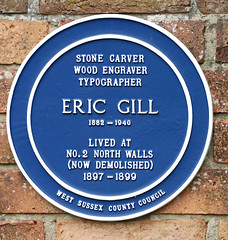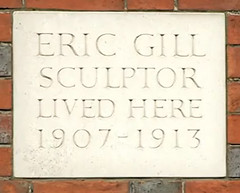Eric Gill
Commemorated on 3 plaques
Eric Gill stone carver was born in this house on the 22nd February 1882
31 Hamilton Road, Brighton, United Kingdom where they was born (1882)
Stone carver wood engraver typographer Eric Gill 1882-1940 lived at no. 2 North Walls (now demolished) 1897-1899
North Walls, Chichester, United Kingdom where they lived
Eric Gill Sculptor Lived here 1907-1913
28 High Street, Ditchling, United Kingdom where they lived (1907-1913)




